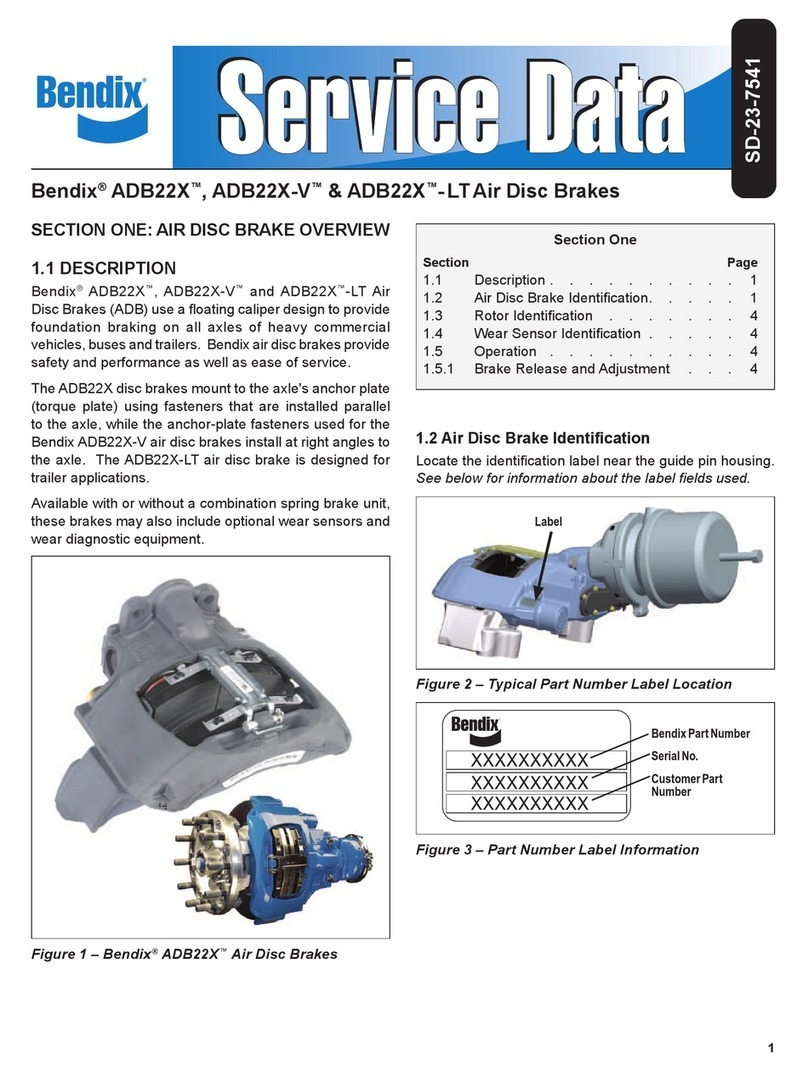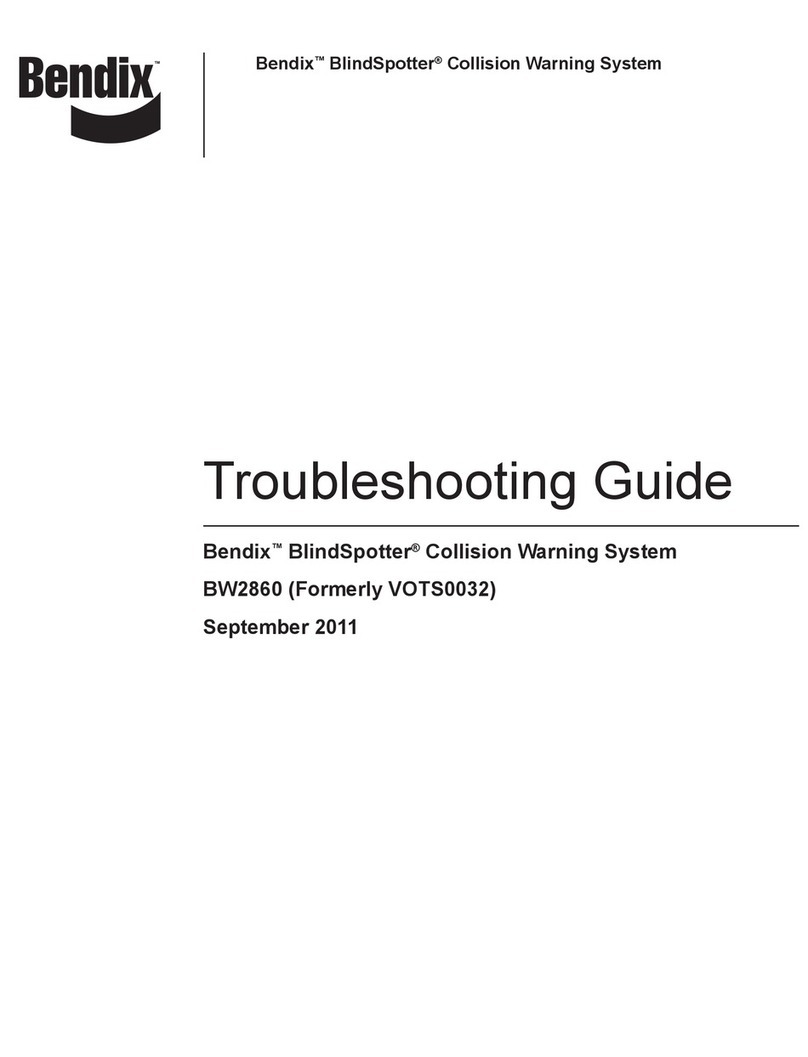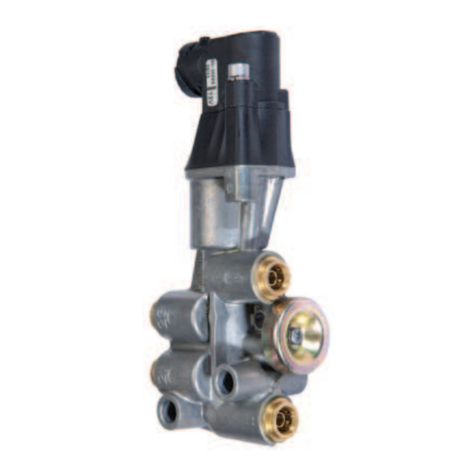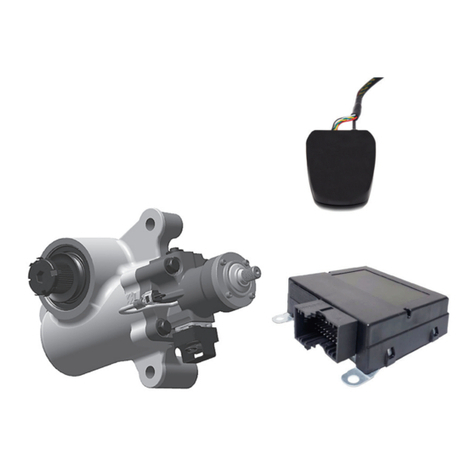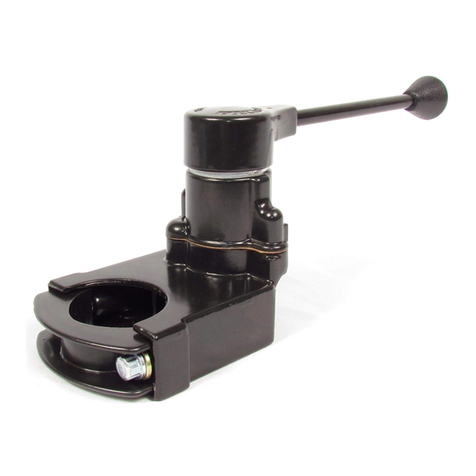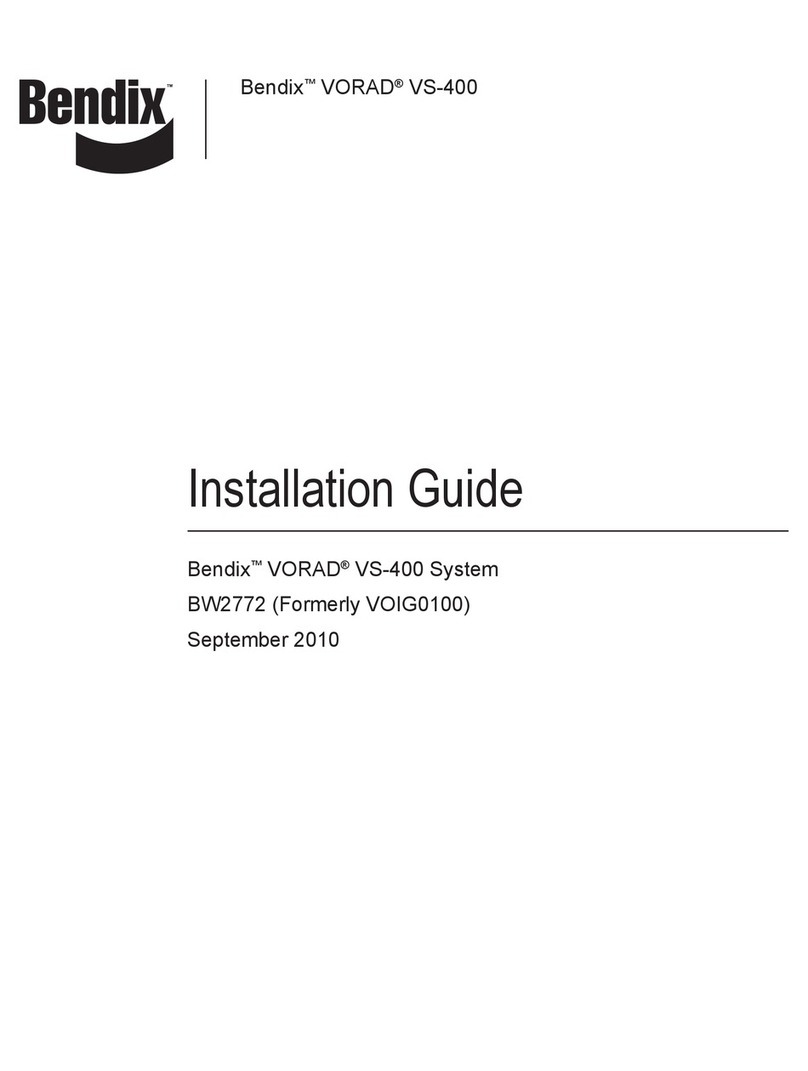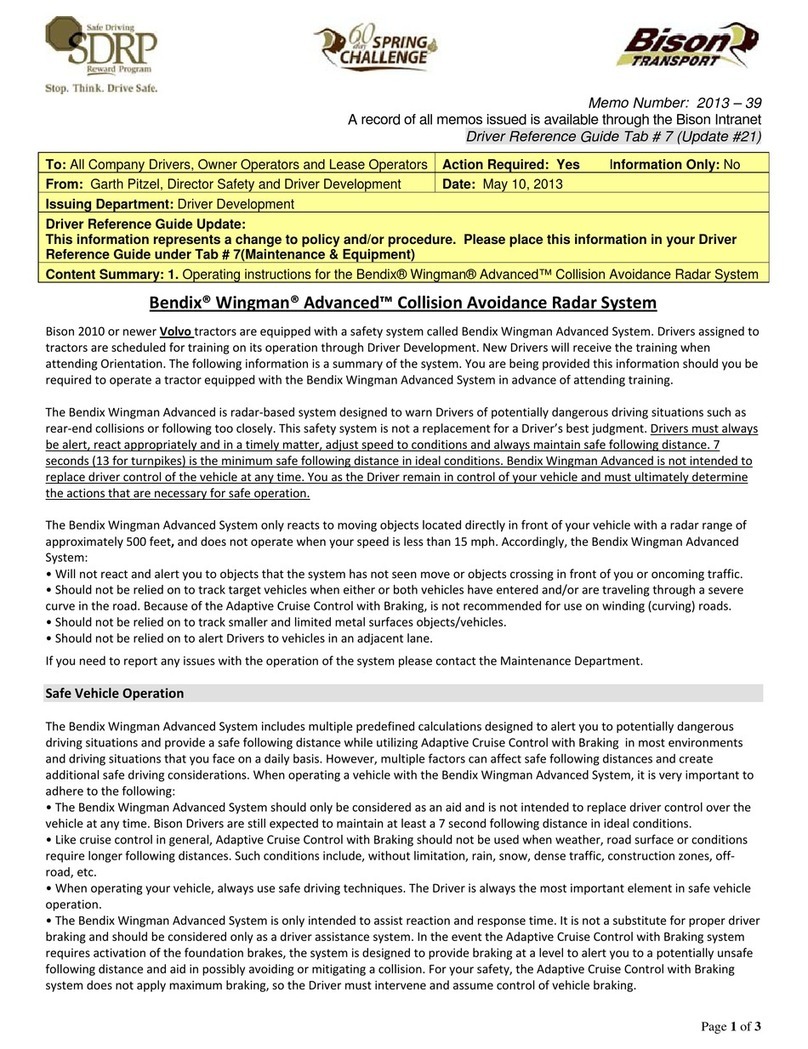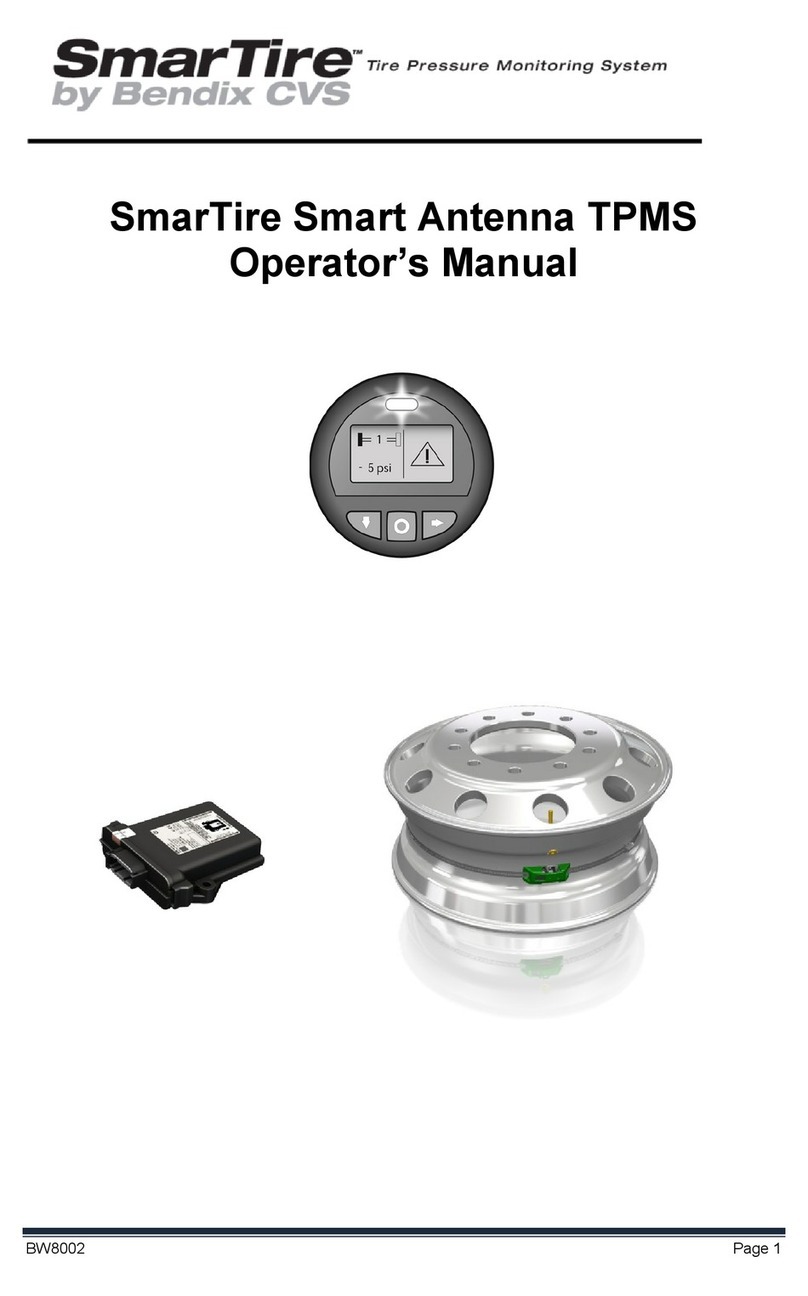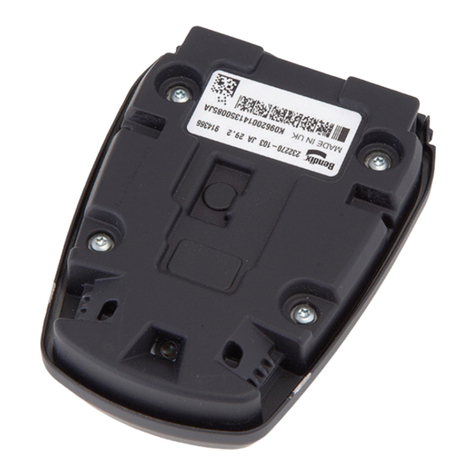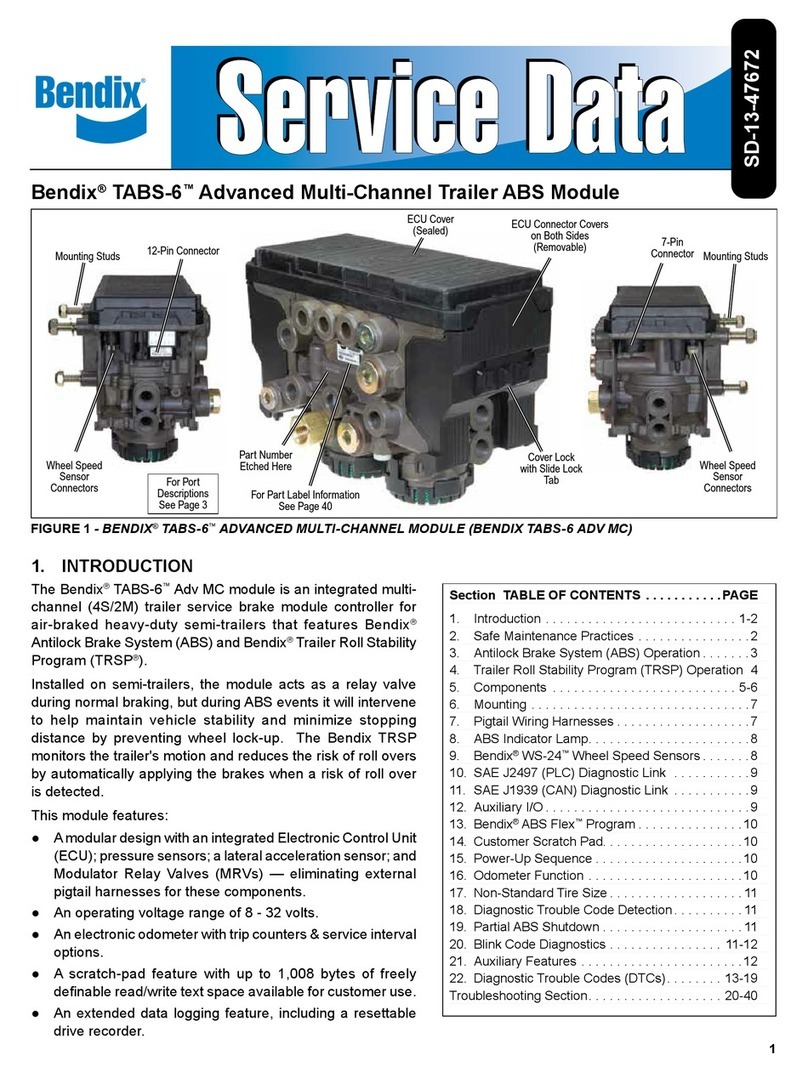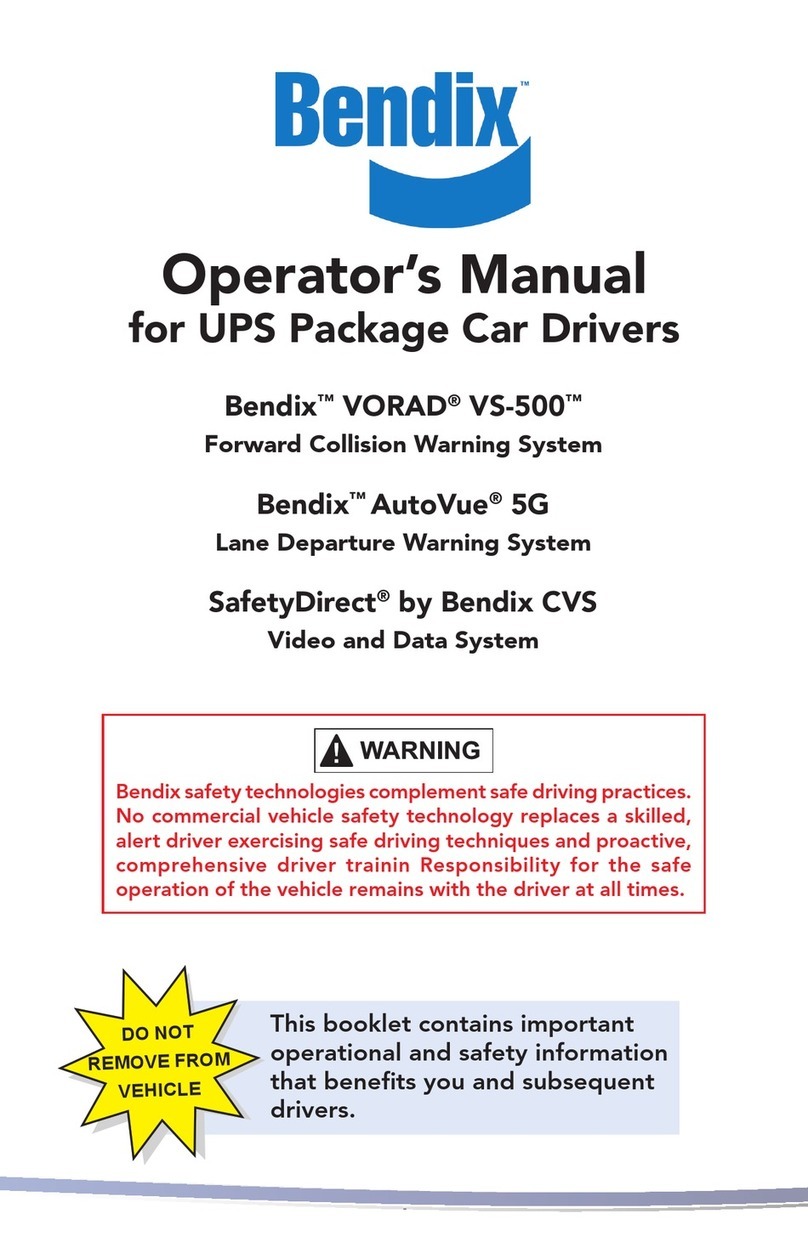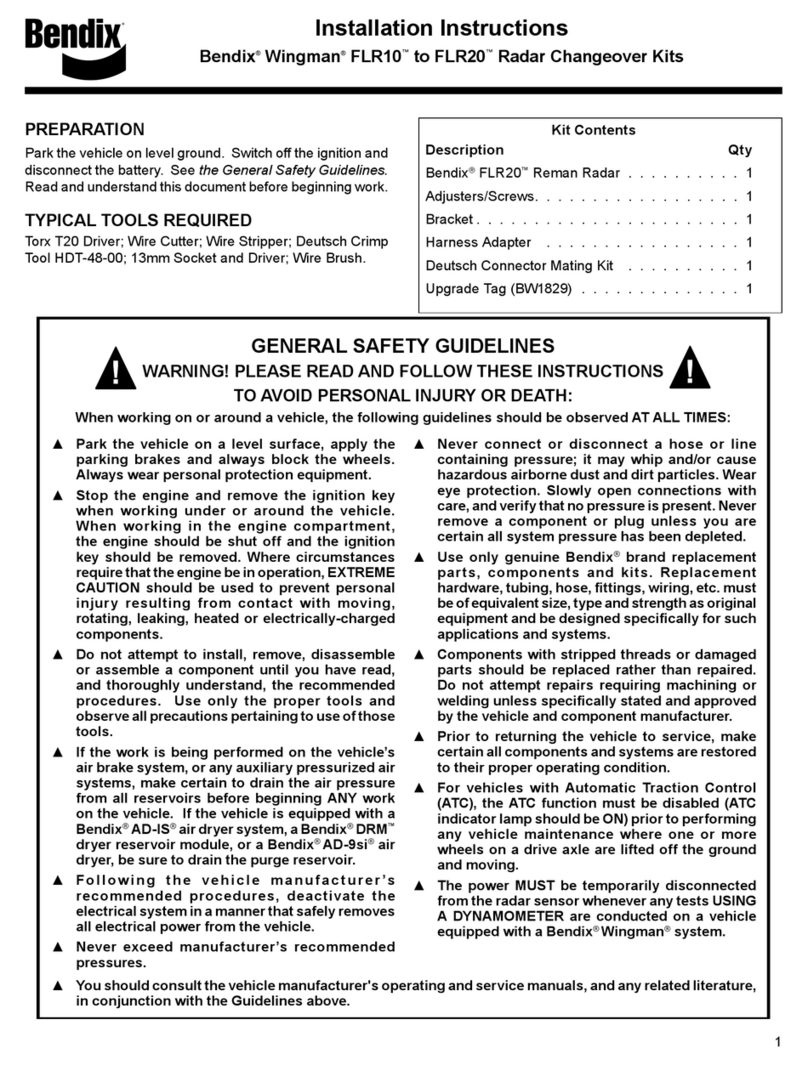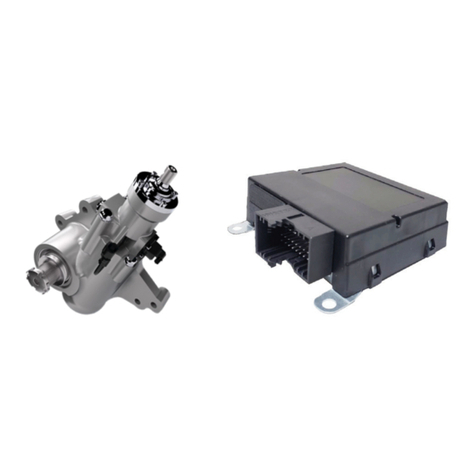
2
S-1509 ©2008 Bendix Commercial Vehicle Systems LLC 1/08 Printed in U.S.A. All Rights Reserved.
GENERAL MAINTENANCE PRECAUTIONS
WARNING! PLEASE READ AND FOLLOW THESE
INSTRUCTIONS TO AVOID PERSONAL INJURY OR
DEATH:
When working on or around a vehicle, the following general
precautions should be observed at all times.
1. Park the vehicle on a level surface, apply the parking
brakes, and always block the wheels. Always wear
safety glasses.
2. Stop the engine and remove ignition key when working
under or around the vehicle. When working in the
engine compartment, the engine should be shut
off and the ignition key should be removed. Where
circumstances require that the engine be in operation,
EXTREME CAUTION should be used to prevent
personal injury resulting from contact with moving,
rotating, leaking, heated or electrically charged
components.
3. Do not attempt to install, remove, disassemble or
assemble a component until you have read and
thoroughly understand the recommended procedures.
Use only the proper tools and observe all precautions
pertaining to use of those tools.
4. If the workis being performed onthe vehicle’s air brake
system, or anyauxiliary pressurized air systems,make
certain to drain the air pressure from all reservoirs
before beginning ANY work on the vehicle. If the
vehicle is equipped with anAD-IS®air dryer system or
a dryer reservoir module, be sure to drain the purge
reservoir.
5. Following the vehicle manufacturer’s recommended
procedures, deactivate the electrical system in a
manner that safely removes all electrical power from
the vehicle.
6. Never exceed manufacturer’s recommended
pressures.
7. Never connect or disconnect a hose or line containing
pressure; it may whip. Never remove a component or
plug unless you are certain all system pressure has
been depleted.
8. Use only genuine Bendix®replacement parts,
components and kits. Replacement hardware, tubing,
hose, fittings, etc. must be of equivalent size, type
and strength as original equipment and be designed
specifically for such applications and systems.
9. Components with stripped threads or damaged parts
should be replaced rather than repaired. Do not
attempt repairs requiring machining or welding unless
specifically stated and approved by the vehicle and
component manufacturer.
10. Prior to returning the vehicle to service, make certain
all components and systems are restored to their
proper operating condition.
11. For vehicles with Antilock Traction Control (ATC),
the ATC function must be disabled (ATC indicator
lamp should be ON) prior to performing any vehicle
maintenance where one or more wheels on a drive axle
are lifted off the ground and moving.
Follow Figure 2 throughout this procedure.
1. Crimp the terminal for the X1 connector to a wire which
will be inserted into pin location 17 of the X1 connector.
Connect the other end of the wire to the Relay coil.
2.
Connect a second wire to ignition power, by either splicing
the wire into the wire located in pin 7 of the X1 connector or
make a connection to the ignition switch, in either case be
sure the connection is protected by a 5 AMP fuse. Connect
the other end of the wire to the Relay coil.
3. ConnectathirdwiretotheengineECMmechanicalretarder
connection - see the vehicle manufacturer's manual as
needed for location. Connect the other end of the wire to
the Relay (typically the common/wiper connection).
4. Connecta fourth wireto the otherside of theNO (normally
open)connectiononthe relay and connecttheotherendof
the wire to ignition power, following the wiring diagram.
5. Install all other wire harness connectors, checking that
each connector snaps into the locked position.
OPERATIONAL TEST AND
RECONFIGURATION
Usea diagnostic toolsuchas the Bendix®ACom™Diagnostics
program, Nexiq Pro Link (using the Eaton cartridge), or blink
code switch (see Figure 3 below and Service Data Sheet
SD-13-4767)toreconfiguretheECUtoa4sensor,4modulator,
with retarder relay (if applicable) configuration.
Before returning the vehicle to service, use the diagnostic
tool to check the installation. Also, check for any diagnostic
trouble codes present and troubleshoot and/or make repairs
as necessary.
FIGURE 3 - READING ABS CONFIGURATION CODES
VOLTAGE CONFIGURATIONS
Flashes Description
1 12 Volt System
2 24 Volt System
ABS CONFIGURATIONS
Flashes Description
2 4 Sensors/4 Modulator Valves
3 4 Sensors/3 Modulator Valves
6 6 Sensors/4 Modulator Valves
8 6 Sensors/6 Modulator Valves
9 6 Sensors/5 Modulator Valves
– Select Low Steer
RETARDER CONFIGURATIONS/INTERAXLE
Flashes Engine Interface Retarder Relay Control Interaxle Lock Control
1 (5) NO NO NO (YES)
2 (6) YES NO NO (YES)
3 (7) YESNO NO (YES)
4 (8) YES YES NO (YES)
1st
2nd
3rd
4th
Blink Code
Sequence
1.5 Sec.
Pause
4.5 Sec.
Pause
1.5 Sec.
Pause
Flashes Engine Control Brake Control
2NO NO
3 N/A N/A
4 N/A N/A
5 YES YES
ATC CONFIGURATIONS
